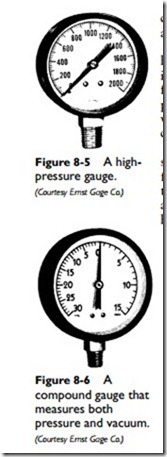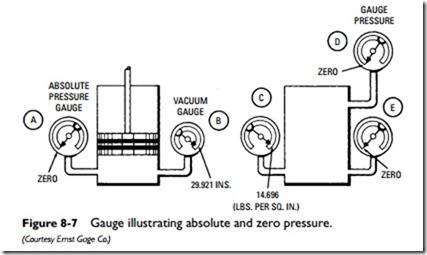Cleaning and Filtering the Air
The purpose of cleaning and filtering the air is to remove dust and other contaminants that could be harmful to the health or discomforting. Many bacteria that cause diseases are carried on dust particles.
Cleaning and filtering may be accomplished with equipment using one of the following four methods:
1. Filtering
2. Washing
3. Combined filtering and washing
4. Electrostatic field
Filters trap particles by bringing them in contact with specially coated surfaces or by straining them through dry materials of particularly close texture. The filters used in air-conditioning equipment may be either dry or wet (viscous) types. Depending on the type used, air-cleaning filters may be replaceable or periodically
cleaned. In the latter case, either manual or automatic cleaning is possible.
Air washers form a part of the cooling and humidifying apparatus of the air-conditioning system. They operate by passing the air first through fine sprays of water and then past baffle plates upon the wetted surface of which is deposited whatever dust and dirt not caught by the sprays.
Electronic air cleaners employ an electro- static ionizing field to remove dust particles from the air. The particles are given an electrical charge when passing through the field and are subsequently attracted to metal plates having an opposite polarity.
Cleaning and filtering processes are described in greater detail in Chapter 12 (“Air Cleaners and Filters”).
Standards of Comfort
The influence of air temperature, moisture, and movement on physical comfort has been very thoroughly investigated. Once again, the most authoritative sources of information on this subject are the results of research conducted by the American Society of Heating, Refrigeration, and Air- Conditioning Engineers. The most current edition of the ASHRAE Guide should be consulted for details because some revisions have been made.
The sensations of warmth or cold experienced by the human body depend not only on the dry-bulb temperature but also on the moisture content of the air. Cooling applications that remove only the sensible heat fall short of establishing comfortable conditions if the latent heat gain is particularly high. The air will be cooler under these conditions, but it will feel damp and uncomfortable. In order to meet minimal standards of comfort, both sensible and latent heat must be reduced to an acceptable level.
The average comfort conditions in summer and winter are considerably different, although the two zones overlap to some degree. This difference is caused largely by differences in clothing, and the natural inclination of the body to acclimate itself to somewhat higher temperatures in the summer.
The effective temperature is an arbitration index of the degree of warmth or cold as apparent to the human body, and takes into account the temperature, moisture content, and motion of the surrounding air.
Effective temperatures are not strictly a degree of heat; at least not in the same sense that dry-bulb temperatures are. For instance, the effective temperature could be lowered by increasing the rate of airflow even though wet- and dry-bulb temperatures remain the same. Consequently, effective temperature is more correctly defined as the body sensation of warmth or cold resulting from the com- bined effect of temperature, humidity, and air movement. For space cooling and heating, however, the air movement factor is consid- ered a constant at approximately 20 feet per minute, and under this condition effective temperature is determined by the wet-bulb and dry-bulb thermometer readings only.


